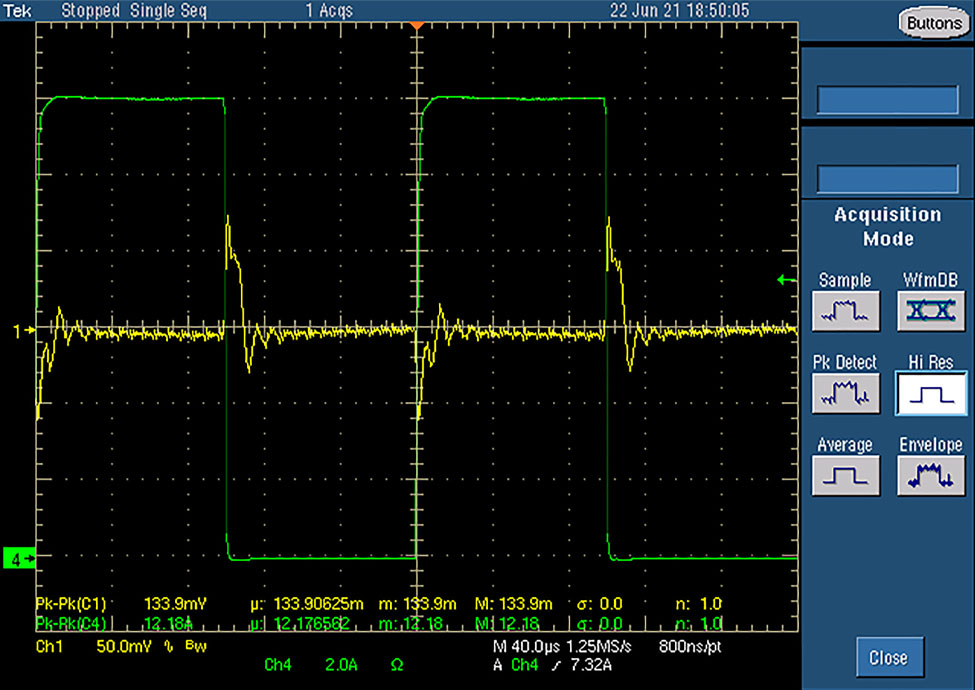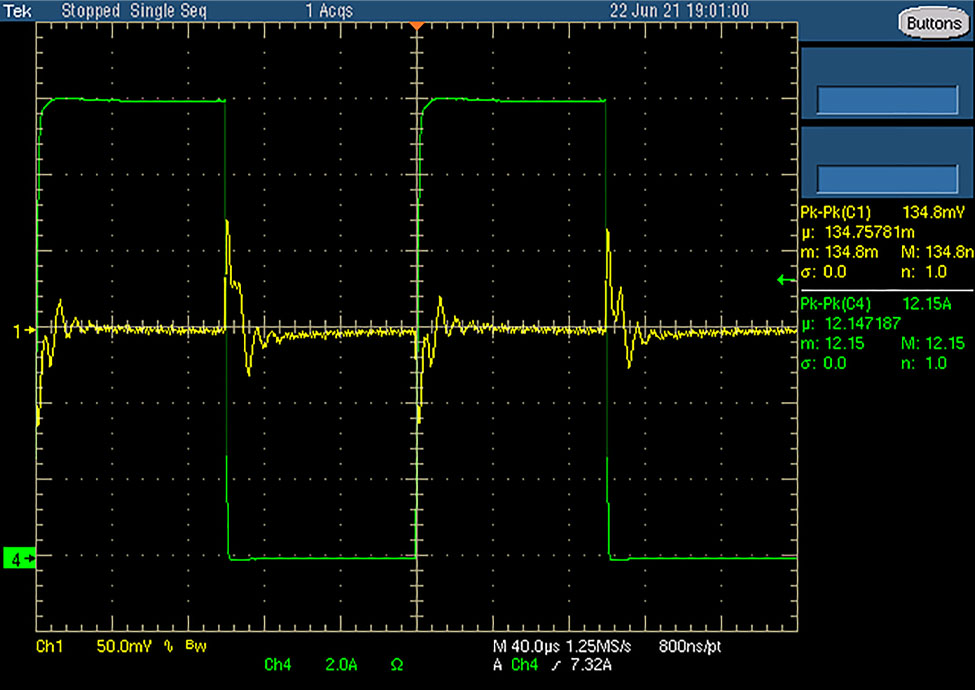SLYT816 October 2021 TPS548B27 , TPS548B28
6 Load transient comparison
A load transient test was performed with a 0% to 60% load step at a 20-A full-load condition, or 0 A to 12 A and then 12 A to 0 A. The rising load step had an 8-A/μs slew rate. When comparing the transient response waveforms shown in Figure 6-1 and Figure 6-2, the Enhanced HotRod QFN package design was very similar to the HotRod package design, with only a 1-mV difference between the total output voltage overshoot and undershoot, because of the load transient. The Enhanced HotRod QFN design offered a hardly noticeable, but very slight improvement of load transient performance compared to the HotRod package. Table 6-1 shows the results.
| Package | VIN | VOUT | FSW | Load step | Slew Rate | Vpeak-peak |
|---|---|---|---|---|---|---|
| Enhanced HotRod QFN package | 12 V | 1 V | 600 kHz | 0 A to 12 A | 8 A/μs | 133.9 mV |
| HotRod package | 134.8 mV |
 Figure 6-1 Enhanced HodRod QFN package
transient response
Figure 6-1 Enhanced HodRod QFN package
transient response Figure 6-2 HotRod package transient
response
Figure 6-2 HotRod package transient
response